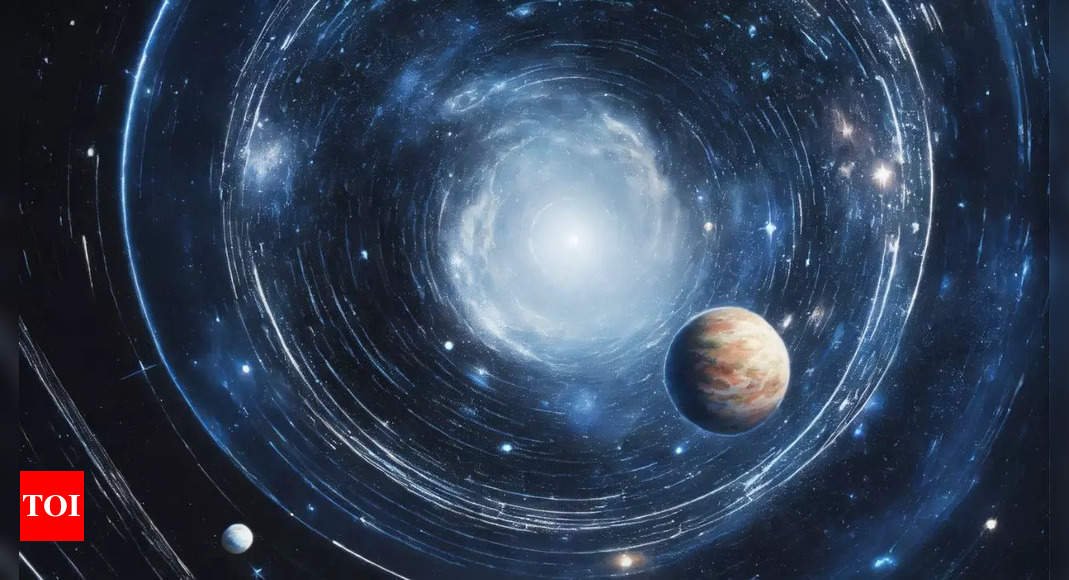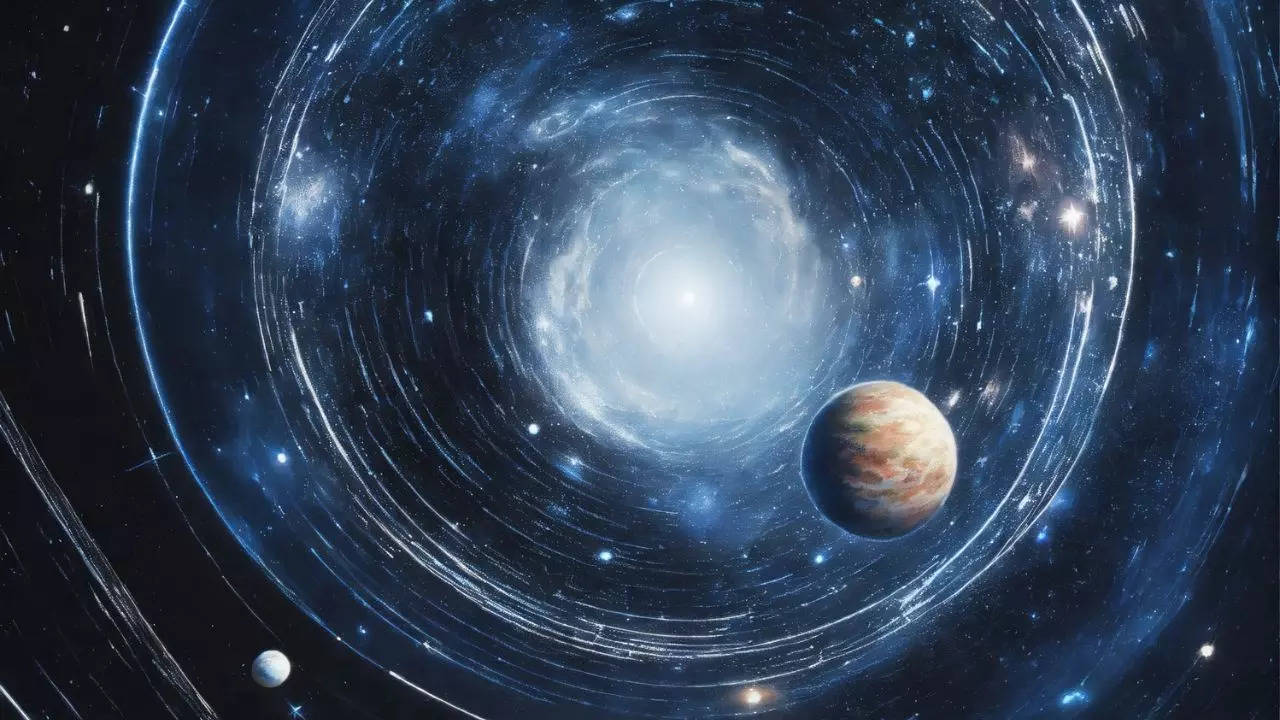
Higgs particle could have ended the universe: What prevented it, why are we still here
-
by Anoop Singh
- 10
The universe have been existing for an impressive 13.7 billion years, but several experiments suggest that it may not be as secure as it appears. And it’s all down to the instability of a single fundamental particle, none other than the Higgs boson.
According to The Conversation, a study recently accepted for publication in Physical Letters B by Lucien Heurtier and his colleagues have demonstrated that certain models of the early universe, particularly those involving “objects called light primordial black holes, are unlikely to be right because they would have triggered the Higgs boson to end the cosmos by now.”
“The Higgs boson is responsible for the mass and interactions of all the particles we know of.That’s because particle masses are a consequence of elementary particles interacting with a field, dubbed the Higgs field. Because the Higgs boson exists, we know that the field exists,” the report said.
“You can think of this field as a perfectly still water bath that we soak in. It has identical properties across the entire universe. This means we observe the same masses and interactions throughout the cosmos. This uniformity has allowed us to observe and describe the same physics over several millennia (astronomers typically look backwards in time),” it added.
The Higgs field, which permeates the universe, is not believed to be in its lowest possible energy state. This means that it has the potential to transition to a lower energy state in a specific region. If such a transition were to occur, it would have profound consequences for the laws of physics.
Physicists refer to this type of change as a phase transition, similar to the process of water turning into vapour and forming bubbles. In the case of the Higgs field, a phase transition would result in the creation of low-energy bubbles of space, each with its own unique set of physical laws.
Within these bubbles, “the mass of electrons would suddenly change, and so would its interactions with other particles. Protons and neutrons – which make up the atomic nucleus and are made of quarks – would suddenly dislocate.”
What is the constant risk
Recent findings from the Large Hadron Collider (LHC) at Cern indicate that the universe’s end might be a possibility, albeit in an extremely distant future, long after our retirement. Physicists often said that the universe is not unstable but rather “meta-stable”, because the world’s end will not happen anytime soon.
According to quantum mechanics, the theory governing the microcosmos of atoms and particles, the Higgs field’s energy is constantly fluctuating. This fluctuation makes it statistically possible, although unlikely, for the Higgs to form a bubble from time to time, which requires a significant amount of time.
“However, the story is different in the presence of external energy sources like strong gravitational fields or hot plasma (a form of matter made up of charged particles): the field can borrow this energy to form bubbles more easily. Therefore, although there is no reason to expect that the Higgs field forms numerous bubbles today, a big question in the context of cosmology is whether the extreme environments shortly after the Big Bang could have triggered such bubbling, ” the report said.
“However, when the universe was very hot, although energy was available to help form Higgs bubbles, thermal effects also stabilised the Higgs by modifying its quantum properties. Therefore, this heat could not trigger the end of the universe, which is probably why we are still here, the report added.
What are Primordial black holes
“A type of black hole which emerged in the early universe from the collapse of overly dense regions of spacetime. Unlike normal black holes, which form when stars collapse, primordial ones could be tiny – as light as a gram.” The potential existence of these lightweight black holes is predicted by various theoretical models that aim to explain the universe’s development in the immediate aftermath of the Big Bang.
According to the study, “However, proving this existence comes with a big caveat: Stephen Hawking demonstrated in the 1970s that, because of quantum mechanics, black holes evaporate slowly by emitting radiation through their event horizon (a point at which not even light can escape).”
“Hawking showed that black holes behave like heat sources in the universe, with a temperature inversely proportional to their mass. This means that light black holes are much hotter and evaporate more quickly than massive ones. In particular, if primordial black holes lighter than a few thousands billion grams formed in the early universe (10 billion times smaller than the Moon’s mass), as many models suggest, they would have evaporated by now, ” it added.
Evaporating primordial black holes cause localized heating in the universe. These black holes would exist within hot spots, which could have significantly higher temperatures compared to the surrounding universe, yet still lower than the characteristic Hawking temperature associated with the black holes.
Through a blend of analytical computations and numerical simulations, it was demonstrated that the presence of these hot spots would perpetually trigger the Higgs field to undergo a bubbling process.
“But we are still here. This means that such objects are highly unlikely to ever have existed. In fact, we should rule out all of the cosmological scenarios predicting their existence”, the report said.
“That’s of course unless we discover some evidence of their past existence in ancient radiation or gravitational waves. Either way, it is clear that we still have a lot to discover about the universe on the smallest and biggest scales,” it added.
According to The Conversation, a study recently accepted for publication in Physical Letters B by Lucien Heurtier and his colleagues have demonstrated that certain models of the early universe, particularly those involving “objects called light primordial black holes, are unlikely to be right because they would have triggered the Higgs boson to end the cosmos by now.”
“The Higgs boson is responsible for the mass and interactions of all the particles we know of.That’s because particle masses are a consequence of elementary particles interacting with a field, dubbed the Higgs field. Because the Higgs boson exists, we know that the field exists,” the report said.
“You can think of this field as a perfectly still water bath that we soak in. It has identical properties across the entire universe. This means we observe the same masses and interactions throughout the cosmos. This uniformity has allowed us to observe and describe the same physics over several millennia (astronomers typically look backwards in time),” it added.
The Higgs field, which permeates the universe, is not believed to be in its lowest possible energy state. This means that it has the potential to transition to a lower energy state in a specific region. If such a transition were to occur, it would have profound consequences for the laws of physics.
Physicists refer to this type of change as a phase transition, similar to the process of water turning into vapour and forming bubbles. In the case of the Higgs field, a phase transition would result in the creation of low-energy bubbles of space, each with its own unique set of physical laws.
Within these bubbles, “the mass of electrons would suddenly change, and so would its interactions with other particles. Protons and neutrons – which make up the atomic nucleus and are made of quarks – would suddenly dislocate.”
What is the constant risk
Recent findings from the Large Hadron Collider (LHC) at Cern indicate that the universe’s end might be a possibility, albeit in an extremely distant future, long after our retirement. Physicists often said that the universe is not unstable but rather “meta-stable”, because the world’s end will not happen anytime soon.
According to quantum mechanics, the theory governing the microcosmos of atoms and particles, the Higgs field’s energy is constantly fluctuating. This fluctuation makes it statistically possible, although unlikely, for the Higgs to form a bubble from time to time, which requires a significant amount of time.
“However, the story is different in the presence of external energy sources like strong gravitational fields or hot plasma (a form of matter made up of charged particles): the field can borrow this energy to form bubbles more easily. Therefore, although there is no reason to expect that the Higgs field forms numerous bubbles today, a big question in the context of cosmology is whether the extreme environments shortly after the Big Bang could have triggered such bubbling, ” the report said.
“However, when the universe was very hot, although energy was available to help form Higgs bubbles, thermal effects also stabilised the Higgs by modifying its quantum properties. Therefore, this heat could not trigger the end of the universe, which is probably why we are still here, the report added.
What are Primordial black holes
“A type of black hole which emerged in the early universe from the collapse of overly dense regions of spacetime. Unlike normal black holes, which form when stars collapse, primordial ones could be tiny – as light as a gram.” The potential existence of these lightweight black holes is predicted by various theoretical models that aim to explain the universe’s development in the immediate aftermath of the Big Bang.
According to the study, “However, proving this existence comes with a big caveat: Stephen Hawking demonstrated in the 1970s that, because of quantum mechanics, black holes evaporate slowly by emitting radiation through their event horizon (a point at which not even light can escape).”
“Hawking showed that black holes behave like heat sources in the universe, with a temperature inversely proportional to their mass. This means that light black holes are much hotter and evaporate more quickly than massive ones. In particular, if primordial black holes lighter than a few thousands billion grams formed in the early universe (10 billion times smaller than the Moon’s mass), as many models suggest, they would have evaporated by now, ” it added.
Evaporating primordial black holes cause localized heating in the universe. These black holes would exist within hot spots, which could have significantly higher temperatures compared to the surrounding universe, yet still lower than the characteristic Hawking temperature associated with the black holes.
Through a blend of analytical computations and numerical simulations, it was demonstrated that the presence of these hot spots would perpetually trigger the Higgs field to undergo a bubbling process.
“But we are still here. This means that such objects are highly unlikely to ever have existed. In fact, we should rule out all of the cosmological scenarios predicting their existence”, the report said.
“That’s of course unless we discover some evidence of their past existence in ancient radiation or gravitational waves. Either way, it is clear that we still have a lot to discover about the universe on the smallest and biggest scales,” it added.
The universe have been existing for an impressive 13.7 billion years, but several experiments suggest that it may not be as secure as it appears. And it’s all down to the instability of a single fundamental particle, none other than the Higgs boson.According to The Conversation, a study recently accepted for publication in Physical Letters…
The universe have been existing for an impressive 13.7 billion years, but several experiments suggest that it may not be as secure as it appears. And it’s all down to the instability of a single fundamental particle, none other than the Higgs boson.According to The Conversation, a study recently accepted for publication in Physical Letters…

